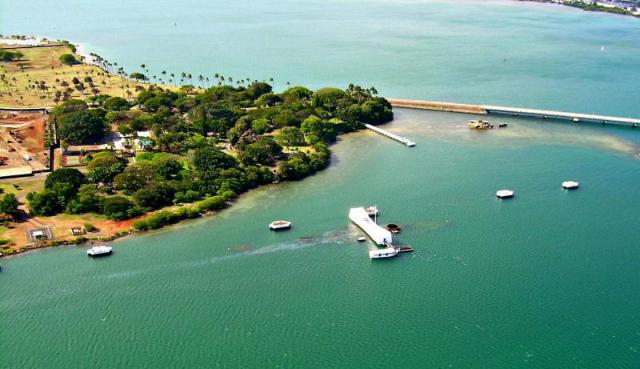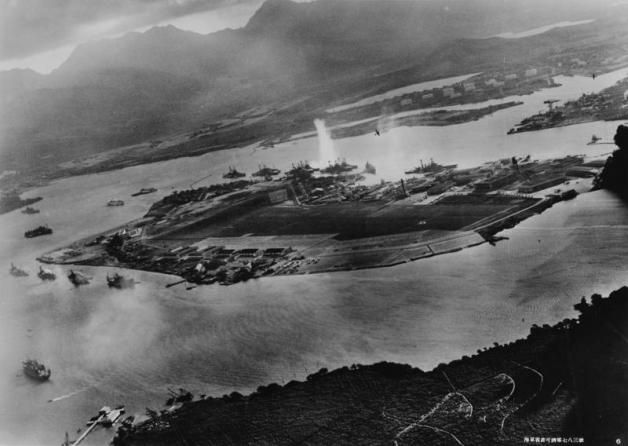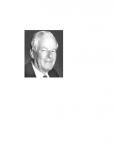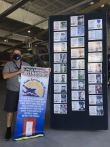The month of August marks the 72nd anniversary of the end of World War 2 as the empire of Japan surrendered following the destruction of two atomic bombs dropped on her.
The war had begun with Japan's attack on Pearl Harbor, Hawaii almost 4 years earlier.
Pearl Harbor, Hawaii is a beautiful natural harbor on the southwest corner of the island of Oahu. It is the gateway to the immense Pacific Ocean beyond it. And, on December 7th, 1941, it became a gateway to war in Europe as well.
At 7:48 am (Hawaiian time) on a quiet Sunday morning the tranquility of the island paradise was suddenly interrupted with the sound of plane engines overhead. 353 of them, to be exact.
Japanese fighter planes, torpedo planes and bombers, which had been launched earlier that morning from six aircraft carriers, broke the peaceful surrounding with a deadly surprise attack on U.S. naval vessels and airplanes parked at Pearl Harbor.
The vicious attack damaged 8 battleships, 3 cruisers, 3 destroyers, 1 training ship and 1 minelayer. In addition, 188 airplanes were destroyed. The most significant carnage was the human toll: 2,403 Americans died in the attack and close to 1,200 were wounded.
The devastation prompted President Franklin Delano Roosevelt to ask for and Congress to approve a declaration of war on the Empire of Japan.
In the aftermath, Adolf Hitler, leader of the Nazi party and Chancellor of Germany, wasted no time in declaring war against the United States.
The theaters of war for the U.S. forces would include Europe and the Japanese empire in the Pacific.
Although the United States soon began some limited combat engagements against the Japanese in the Pacific Theater, Nazi-controlled Europe was their first focus.
England, which had already been pushed out of France with an embarrassing departure at Dunkirk and had been enduring intense bombings by the German Luftwaffe (Air Forces), had been requesting U.S. involvement for some time.
And so the path of heroic service for many thousands of Americans stretched out across the Atlantic Ocean to the continent of Europe.
It was not a quick deployment. The United States had to build up and train her military forces before sending them to face the Nazi aggressors.
The North African campaign was the early proving ground for U.S. combat readiness as they engaged the Germans from May of 1942-May of 1943.
Following the victory against the Germans in North Africa, the U.S. and British invaded Italy – the “soft underbelly of Europe”, as Winston Churchill referred to it.
Soviet leader Joseph Stalin had been pressuring both Churchill and Roosevelt to open up a 2nd front against the Germans which had been engaged in combat operations against Russia since 1941. The “Big Three” leaders agreed to the plan for that 2nd front to be in Italy.
All the while, the Allied forces were continuing preparations for a massive build-up of troops and equipment in England from which to stage an amphibious invasion into France.
France had already succumbed to German occupation in 1940. Hitler, knowing that the U.S. would eventually enter the war, had sent General Erwin Rommel to oversee the preparations for defending Northern France.
General Eisenhower was selected as the Supreme Commander for the Allied Forces in Europe. Operation Overlord was the code name for the invasion of France. It was designed to be the largest amphibious operation ever. It took months to plan and years to execute. Ships, planes and personnel had to be staged in England and had to be readied for the upcoming attack.
A massive build-up took place throughout southern England.
Although the French city of Calais was the shortest distance across the English Channel for an invasion on France, the Allied leadership selected the more distant beaches of Normandy for the amphibious landing.
The tide and lunar schedule figured prominently into selecting the date. May of 1944 was the projected timeframe for the operation to begin. But weather delayed it further until June.
Every day allowed Germany more time to prepare her defenses.
The invasion almost didn’t happen until July. Bad weather threatened to delay the crossing. Initially, June 5th was the date chosen by Eisenhower for D-Day. But heavy storms forced a delay. The prospect of storms threatened June 6th as well. But weathermen forecasted a window of opportunity for the invasion to still take place on June 6th.
It was Eisenhower’s decision alone as to whether the attack would occur on June 6th or be delayed another month.
After much thought and advice from his staff, he decided to take a chance on June 6th.
And so it was that another ‘infamous’ date was set for posterity. It would come 3.5 years after the December 7th attack on Pearl Harbor. And it would be the decisive combat move that would result in the defeat of Nazi Germany.
The invasion against German-controlled France was about to begin.
Next week: Along the Path of Heroes – Omaha Beach (Part 2)
Ronald P. May, USN (Ret.), is author of the book, “Our Service, Our Stories”. He helps veterans share and preserve the stories of their military service. For more information or to tell your story, contact May at 317-435-7636 or by email at yourlifestory@live.com. You can also follow him on Facebook at Our Service, Our Stories.






